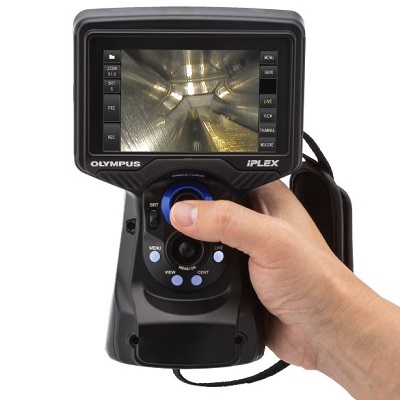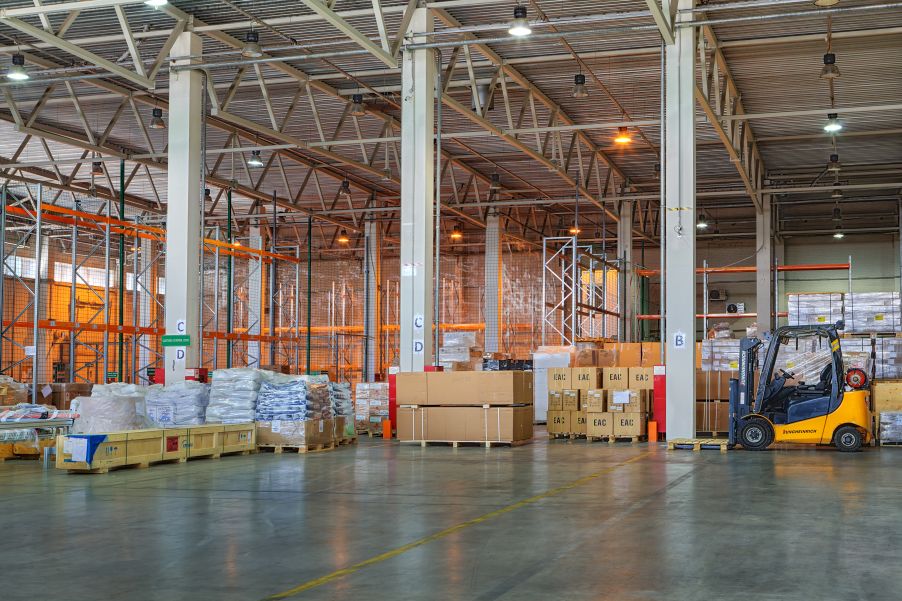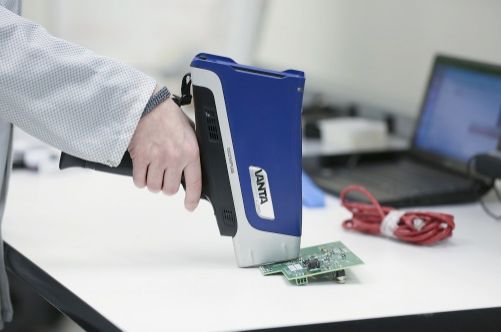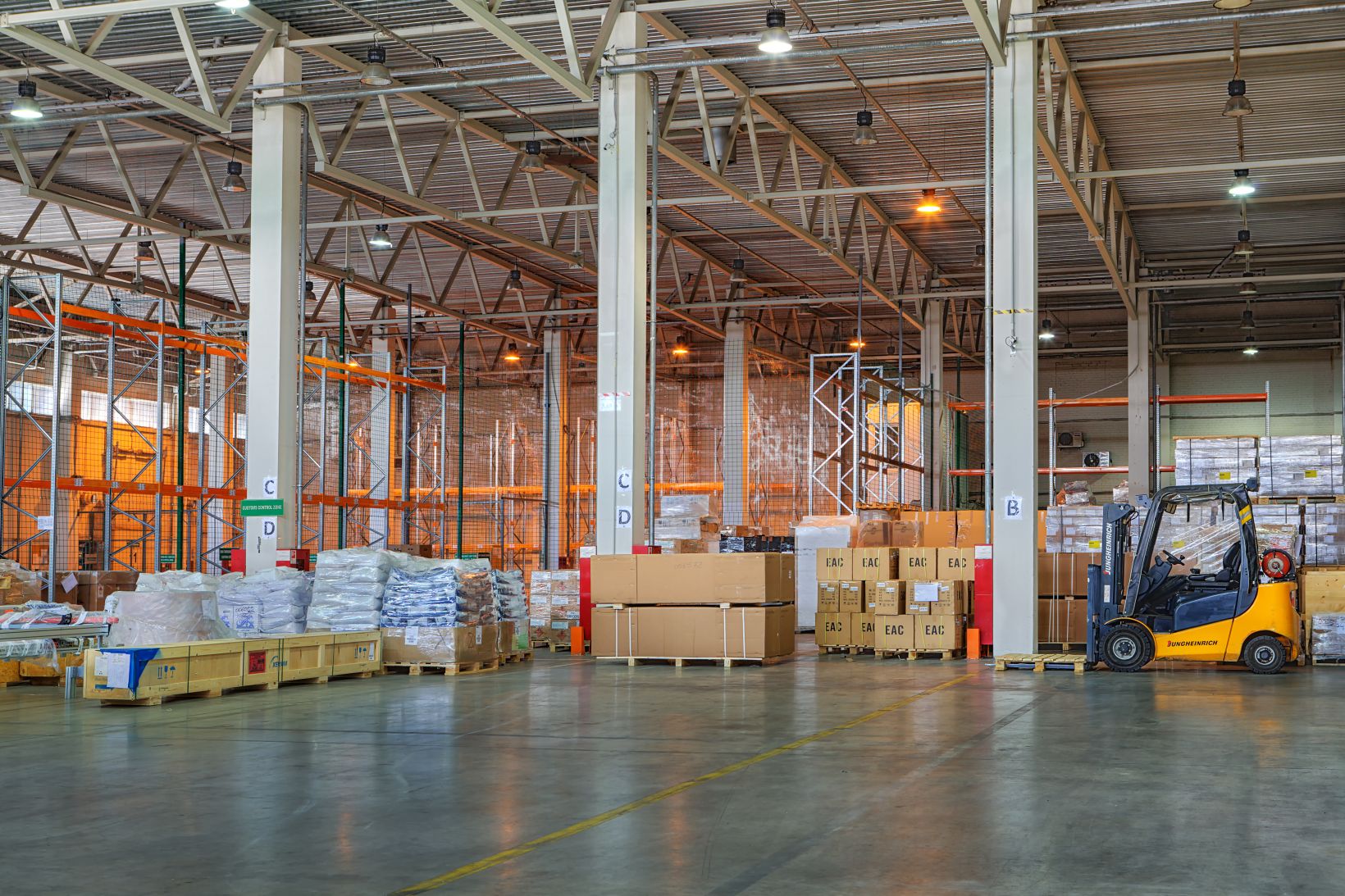Each year, more than 24 million shipping containers arrive at US borders. To maintain security, customs officials inspect arriving cargo for dangerous objects and materials. Nondestructive testing (NDT) methods are an essential asset to border officials because they enable inspections without destroying the cargo or placing themselves in danger.
Two of our NDT technologies are commonly used for border control checks, each one providing unique advantages.
1. X-Ray Fluorescence Analyzers to Detect Hazardous or Banned Substances
While border inspectors work to keep out banned items such as illegal drugs and weapons, they must also search for materials that contain toxic chemicals or hazardous substances. Imported children’s toys, for example, can contain toxic metals that may be dangerous if ingested. Point-and-shoot X-ray fluorescence detectors, such as our Vanta™ handheld XRF (HHXRF) analyzer, can determine the chemical composition of materials, including lead (Pb), cadmium (Cd), arsenic (As), mercury (Hg), and chromium (Cr), in just a few seconds.
HHXRF Helps Border Officers Ensure Compliance with International Restrictions
Inspectors must also ensure that the cargo they inspect complies with the Restriction on Hazardous Substances (RoHS) directives put in place by the European Union. RoHS restricts the use of hazardous materials such as heavy metals, polybrominated flame retardants, and phthalates in electronic equipment. These substances, if used in electronics, can create harmful e-waste, so RoHS prevents specified electronic products from being imported, manufactured, or sold in the EU if they contain any hazardous substances above certain levels.
Customs and Border Protection Agents Need Fast, On-the-Spot Results
Historically, inspectors have used laboratory testing to identify materials. However, import and border agencies process millions of goods every day, making extensive laboratory testing impractical. X-ray fluorescence (XRF) technology is a quick, reliable alternative to laboratory testing.
For RoHS restricted materials, Vanta analyzers provide inspectors a clear “Pass/Fail” indication based on the International Electrotechnical Commission (IEC) guidelines. XRF analyzers can screen for multiple RoHS substances simultaneously, and testing can be done in seconds with minimal sample preparation. With a portable XRF analyzer, materials can be tested on site, so significantly more materials can be tested each day.
2. Remote Visual Inspection to Search Difficult-to-Access Spaces
While XRF technology is valuable for the identification of materials and hazardous substances, remote visual inspection (RVI) equipment is equally important to maintaining safety and security at the border. Airplanes, cargo ships, and automobiles must be inspected for any contraband or dangerous substances before they can cross into the country.
Industrial videoscopes can be used to thoroughly inspect gaps between shipping containers, fuel tanks in automobiles, and hidden compartments in aircraft to help ensure the absence of dangerous materials. Spaces such as these can be difficult to access without RVI equipment.
Border Officers Need Videoscopes That Enable Them to Maneuver with Ease
Portability and ease-of-use are crucial for customs inspectors. Time constraints between flights mean that airplanes must be inspected as quickly and efficiently as possible. Security officers need the ability to board an aircraft with minimal equipment while maintaining a high level of efficiency.
Videoscopes such as the IPLEX™ G Lite are useful tools because they’re lightweight and portable. With the G Lite videoscope in one hand, border agents can maneuver the scope’s insertion tube into tight spaces using its electrically controlled TrueFeel® steering. The tungsten Tapered Flex® outer braid helps optimize the tube’s flexibility and rigidity.
The Illumination Power to See Hidden Dangers
The interchangeable light sources of IPLEX videoscopes, offering white light, ultraviolet, and infrared illumination, help reduce risks for the inspectors themselves. Border officials can use the infrared light to view objects in dark areas, as well as potentially photosensitive explosive devices. The long insertion tubes enable customs officials to inspect cargo for contraband and explosives remotely, increasing their own safety as well as the security of the border.

A videoscope can stream images from previously inaccessible, dark spaces.
Related Content
Handheld XRF for Import Safety and Border Security for Government Agencies
Investigating Crime Using an Industrial Videoscope with Infrared (IR) Light Observation
Get In Touch



